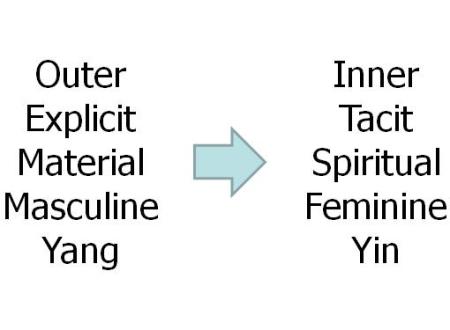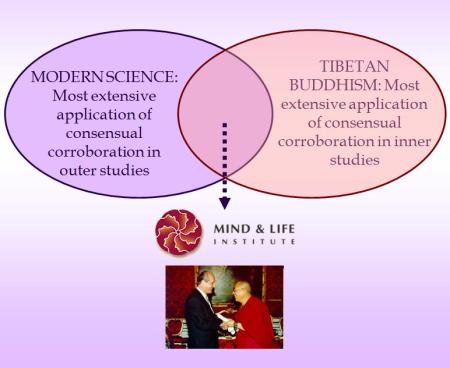I introduced trans-societal Megatrend #1 in an earlier blog (“Q14- Naming Trans-Societal Megatrend #1: towards Yin?”). I summarized Megatrend #1 (see blog “KM and trans-societal megatrend #1”) as:

Trans-societal Megatrend #2 (introduced in blog Q26- Information: another Force for Democratization) can be summarized as:

If we combine these two megatrends and again use Ken Wilber’s framework, we have a new way of characterizing major societal innovations and anticipating where the next major societal innovations would be emerging:

Do you agree with the following observations?
- The combined trend is towards the lower left or indigo-colored Quadrant 4 in the figure above. Using simplistic language, the trend is towards the democratization of religions (Quadrant 1 to 4) and the spiritualization of democracy, free markets and science (Quadrant 3 to 4).
- There is a mega-tension between Quadrants 1 and 3 which can be seen in the conflict between Western democratic values versus Islamic fundamentalism and theocracy (which underlies the events in Iraq and Afghanistan, terrorist attacks in Europe and North America, and tension between European cultures and cultures of Muslim immigrants in Europe), the conflict between scientific empiricism and religious faith (seen in Matthew Fox’s creation spirituality versus traditional Catholic doctrines, Darwinian evolution versus creationism from Genesis), and the conflict between laissez faire capitalism and various economic models that emphasize the humanistic, psychological and spiritual dimensions (such as “Small is Beautiful: Economics as if People Mattered” by Schumacher, Bhutan King Jigme Singye Wangchuck’s “Gross National Happiness”).
- Regressive forces are represented by those groups which aim to maintain or go back to communism, dictatorship, theocracy, monopolistic control of national economies, etc.
- New practices are emerging in Quadrant 4, which I call “indigo practices.” I will write about this in another blog. The interactive practice in double-loop learning that I am proposing in the last blog (An Invitation to Interactive Practice of Double-Loop Learning) is an indigo practice.
- A most interesting convergence between Quadrants 1 and 3 is happening between Tibetan Buddhism and modern science: the Mind and Life Institute. Tibetan Buddhism comes from centuries of learning, experiential studies and applying consensual corroboration in the inner worlds; while modern sciences comes from centuries of learning, empirical studies and applying consensual corroboration in the outer worlds.

I introduced the ideas in this blog in an earlier paper on “Information Technology and Security in the 21st Century” which I read at the Asia-Pacific Security Forum Conference in Taipei, Taiwan in December 1999.
Please tell us what you think about these.
—
(Note that there are embedded links in this blog post. They show up as colored text. While pressing “Ctrl” click on any link to create a new tab to reach the websites pointed to.)
=>Back to main page of Apin Talisayon’s Weblog
=>Jump to Clickable Master Index



